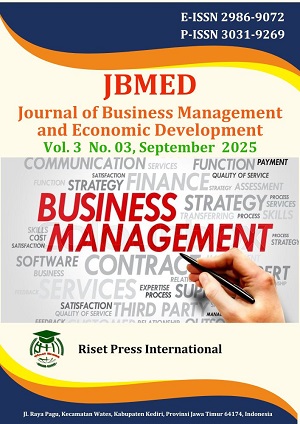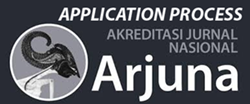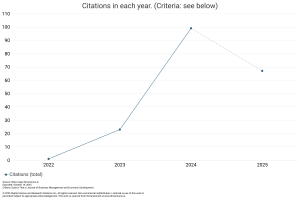Financial Cooperatives in Advancing Financial Inclusion: A Comparative Analysis of Tanzania and Indonesia
DOI:
https://doi.org/10.59653/jbmed.v3i03.1989Keywords:
Cooperatives, SACCOS, KSP, BMT, Financial Inclusion, MicrofinanceAbstract
Financial cooperatives are steadily being identified as the necessary means to expand access to low-cost financial services, especially in emerging economies where high proportions of the population are not yet included in formal financial systems. This article is a comparative analysis of financial cooperatives in Tanzania and Indonesia, with emphasis on the role in promoting financial inclusion, financial regulations, and new digital developments. Based on secondary analysis of national surveys, government reports, and academic research, the analysis identifies the achievements and current issues of both countries. Savings and Credit Cooperative Societies (SACCOS), a component of the tiered microfinance system in the Bank of Tanzania, have been brought into the picture, and formal financial inclusion has increased to 76% in 2023 (FinScope Tanzania, 2023). Cooperatives in Indonesia include Koperasi Simpan Pinjam (KSP) and Islamic Baitul Maal wat Tamwil (BMT), and financial inclusion is 80.51% in 2025 (OJK, 2025). The results show that Tanzania has been improving in agricultural financing and mobile-money integration and Indonesia in sharia-compliant cooperative financing and in support of SMEs. The comparative analysis implies the possibility of cross-learning: Tanzania may learn models of the Indonesian sharia and literacy programs, whereas Indonesia may learn the experience of the Tanzanian tiered regulatory system and the practice of agrifinance. The analysis concludes that the two systems continue to need professionalization, integration into the digital realm, and better governance to spur inclusive growth.
Downloads
References
Ali, M. M., Devi, A., Furqani, H., & Hamzah, H. (2020). Islamic financial inclusion determinants in Indonesia: an ANP approach. International Journal of Islamic and Middle Eastern Finance and Management, 13(4). https://doi.org/10.1108/IMEFM-01-2019-0007
Allen, F., Demirguc-Kunt, A., Klapper, L., & Martinez Peria, M. S. (2016). The foundations of financial inclusion: Understanding ownership and use of formal accounts. Journal of Financial Intermediation, 27. https://doi.org/10.1016/j.jfi.2015.12.003
ANTARA News. (2025). Government targeting 15,000 fully operational village cooperatives in August. ANTARA News. https://en.antaranews.com/news/374509/govt-targeting-15000-fully-operational-village-cooperatives-in-august
Ascarya, X. (2021). Baitul Maal Wat Tamwil as integrated Islamic microfinance institution to support sDGs. In Islamic Wealth and the SDGs: Global Strategies for Socio-Economic Impact. https://doi.org/10.1007/978-3-030-65313-2_9
Azhar, M. (2025). Tackling last mile gaps in Indonesia’s financial inclusion journey. GovInsider. https://govinsider.asia/intl-en/article/tackling-last-mile-gaps-in-indonesias-financial-inclusion-journey
Bank of Tanzania. (2024). ANNUAL FINANCIAL INCLUSION REPORT 2024. www.bot.go.tz
Birchall, J. (2013). Resilience in a downturn: The power of financial cooperatives. International Labour Organization.
Bloomberg. (2025). Indonesia’s Prabowo Banks on 80,000 “Red-White” Co-ops to Boost Rural Fortunes. Bloomberg. https://www.bloomberg.com/news/articles/2025-07-21/indonesia-s-prabowo-banks-on-80-000-red-white-co-ops-to-boost-rural-fortunes
Box, J. A. R., Moreno, V. M., & Urena, L. J. B. (2013). Analysis of survival as a tool for detection of systemic risks in decision-making: A proposed theoretical model for Spanish credit cooperative sector. Actual Problems of Economics, 148(10).
Bwana, K. M., & Mwakujonga, J. (2013). Issues in SACCOS Development in Kenya and Tanzania: The Historical and Development Perspectives. 3(5). www.iiste.org
Catelo, S. P., Catelo, M. A. O., & Mina, C. S. (2017). Rural financial markets and credit delivery system in the Philippines. In Microfinance In Asia. https://doi.org/10.1142/9789813147959_0006
Chiliquinga, V. E. M., Popescu, C. R. G., & González, A. L. (2023). The impact of cooperative control regulations for the assessment of environmental and social risk: The case of credit placement in Ecuador. In Achieving the Sustainable Development Goals Through Infrastructure Development. https://doi.org/10.4018/979-8-3693-0794-6.ch008
Cuevas, C. E., & Fischer, K. P. (2006). Cooperative Financial Institutions: Issues in governance, regulation, and supervision. World Bank Working Paper, 82.
Demirguc-Kunt, A., Klapper, L., Singer, D., Ansar, S., & Hess, J. (2018). The Global Findex Database 2017: Measuring Financial Inclusion and the Fintech Revolution. In The Global Findex Database 2017: Measuring Financial Inclusion and the Fintech Revolution. https://doi.org/10.1596/978-1-4648-1259-0
Egia, E. G. (2020). Legal status of the participation of members in the capital of the cooperative: Types of contribution and economic rights. Boletin de La Asociacion Internacional de Derecho Cooperativo, 53. https://doi.org/10.18543/BAIDC-53-2018PP207-224
Financial Sector Deepening Trust. (2023). FinScope Tanzania 2023 full report. https://www.fsdt.or.tz/wp-content/uploads/2023/07/FinScope-Tanzania-2023-Full-Report-Insights-that-Drive-Innovation.pdf
Guardian. (2024). Factors obstructing cooperative unions’ economic progress. SPECIAL REPORT: https://ippmedia.co.tz/the-guardian/business/read/special-report-factors-obstructing-cooperative-unions-economic-progress-11-2024-08-09-192708?
IBS Intelligence. (2025). Tanzania’s payments market shifts from cash and cards to mobile. Official News. Retrieved from https://ibsintelligence.com/ibsi-news/tanzanias-payments-market-shifts-from-cash-and-cards-to-mobile/
ILO. (2024). Cooperatives and the Sustainable Development Goals A Contribution to the Post-2015 Development Debate A Policy Brief.
Kumburu, N. P., & Pande, V. (2020). Rural Transformation Through Savings and Credit Cooperative Societies in Moshi District, Tanzania. In The Palgrave Handbook of Agricultural and Rural Development in Africa. https://doi.org/10.1007/978-3-030-41513-6_15
Lal, T. (2019). Measuring impact of financial inclusion on rural development through cooperatives. International Journal of Social Economics, 46(3). https://doi.org/10.1108/IJSE-02-2018-0057
Ledgerwood, J. (1998). Microfinance handbook: an institutional and financial perspective. In Microfinance handbook: an institutional and financial perspective.
Marwa, N., & Aziakpono, M. (2015). Financial sustainability of Tanzanian saving and credit cooperatives. International Journal of Social Economics, 42(10). https://doi.org/10.1108/IJSE-06-2014-0127
McDonnell, M. J., & Hahs, A. K. (2009). Comparative ecology of cities and towns: Past, present and future. In Ecology of Cities and Towns: A Comparative Approach. https://doi.org/10.1017/CBO9780511609763.006
Messabia, N., Beauvoir, E., & Kooli, C. (2023). Governance and Management of a Savings and Credit Cooperative: The Successful Example of a Haitian SACCO. Vision, 27(3). https://doi.org/10.1177/09722629221074130
Meyer, E. (2018). The new economic scenario and its impact on the cooperative banking business model. In New Cooperative Banking in Europe: Strategies for Adapting the Business Model Post Crisis. https://doi.org/10.1007/978-3-319-93578-2_2
Migliorelli, M. (2018). Cooperative banks lending during and after the great crisis. In New Cooperative Banking in Europe: Strategies for Adapting the Business Model Post Crisis. https://doi.org/10.1007/978-3-319-93578-2_3
Misra, B. S. (2010). Credit cooperatives in India: Past, present and future. In Credit Cooperatives in India: Past, Present and Future. https://doi.org/10.4324/9780203854938
Mooney, M. (2008). Making poverty history in Sandwell the co-operative way. Medicine, Conflict, and Survival, 24 Suppl 1. https://doi.org/10.1080/13623690801957422
Mutiarni, R., Salim, U., Sukoharsono, E. G., & Rahayu, M. (2023). The Role of Islamic Intellectual Capital on Isalamic Cooperative Performance in Indonesia. Review of Integrative Business and Economics Research, 12(1).
Ndiege, B. O., Qin, X., Massambu, D., & Towo, E. N. (2016). Analysis of the Possibilities for Expansion of Services in Tanzanian Savings and Credits Co-Operative Societies: Learning From Economies Of Scale. Annals of Public and Cooperative Economics, 87(2). https://doi.org/10.1111/apce.12104
OJK. (2025). National Survey on Financial Literacy and Inclusion (SNLIK) 2024–2025 results.
Putnam, R. D. (2000). Bowling Alone: The Collapse and Revival of American Community: New York: Simon und Schuster, 2001. ISBN. Policy Analysis, 20.
Rahayu, N. S. (2020). The intersection of islamic microfinance and women’s empowerment: A case study of baitul maal wat tamwil in indonesia. International Journal of Financial Studies, 8(2). https://doi.org/10.3390/ijfs8020037
Shettima, U., & Dzolkarnaini, N. (2024). Deposit-borrowing substitutability: Evidence from microfinance institutions around the world. International Journal of Finance and Economics, 29(3). https://doi.org/10.1002/ijfe.2817
Subroto, W. T. (2015). Revitalization of pancasila economic system in the globalization era. International Journal of Economics and Financial Issues, 5(4).
Sugarda, P. P. (2016). Cooperatives: Indonesia’s sleeping giant or a total failure? A legal perspective. Social Sciences (Pakistan), 11(18).
Thalib, P., Hajati, S., Kurniawan, F., & Aldiansyah, K. (2020). 5C Principles in Profit and Loss Sharing Financing on Baitul Maal Wattamwil as Islamic Micro Finance in Indonesia. Substantive Justice International Journal of Law, 3(2). https://doi.org/10.33096/substantivejustice.v3i2.76
The Guardian. (2025). Tanzania’s financial inclusion index hits 0.81 in 2024. The Guardian News. https://www.ippmedia.com/the-guardian/business/read/tzs-financial-inclusion-index-hits-081-in-2024-2025-08-27-101635
Trisniarti, N., Sofyana, N. N., & Azhari, A. (2022). The Contribution of Cooperatives to the Indonesian Economy. Almana : Jurnal Manajemen Dan Bisnis, 6(3). https://doi.org/10.36555/almana.v6i3.1927
VOI. (2024, October 10). The Number Of Active Cooperatives Until 2024 Becomes 130,119. https://voi.id/en/economy/424057?
WOCCU. (2022). STATISTICAL REPORT 2023.
World Bank. (2022). Global Findex Database 2021: Financial inclusion across the world.
Wulandari, P. (2019). Enhancing the role of Baitul Maal in giving Qardhul Hassan financing to the poor at the bottom of the economic pyramid: Case study of Baitul Maal wa Tamwil in Indonesia. Journal of Islamic Accounting and Business Research, 10(3). https://doi.org/10.1108/JIABR-01-2017-0005
Zakayo, E., & Ndiege, B. (2025). Financial Cooperatives in Tanzania: What Brings the Uniqueness and Satisfaction of Services Offered? https://www.researchgate.net/publication/394263373
Zulkhibri, M. (2016). Financial inclusion, financial inclusion policy and Islamic finance. Macroeconomics and Finance in Emerging Market Economies, 9(3). https://doi.org/10.1080/17520843.2016.1173716
Downloads
Published
How to Cite
Issue
Section
License
Copyright (c) 2025 Issa G. Ahmed

This work is licensed under a Creative Commons Attribution-ShareAlike 4.0 International License.
Authors who publish with this journal agree to the following terms:
- Authors retain copyright and grant the journal right of first publication with the work simultaneously licensed under a Creative Commons Attribution-ShareAlike that allows others to share the work with an acknowledgement of the work's authorship and initial publication in this journal.
- Authors are able to enter into separate, additional contractual arrangements for the non-exclusive distribution of the journal's published version of the work (e.g., post it to an institutional repository or publish it in a book), with an acknowledgement of its initial publication in this journal.
- Authors are permitted and encouraged to post their work online (e.g., in institutional repositories or on their website) prior to and during the submission process, as it can lead to productive exchanges, as well as earlier and greater citation of published work (See The Effect of Open Access).





























